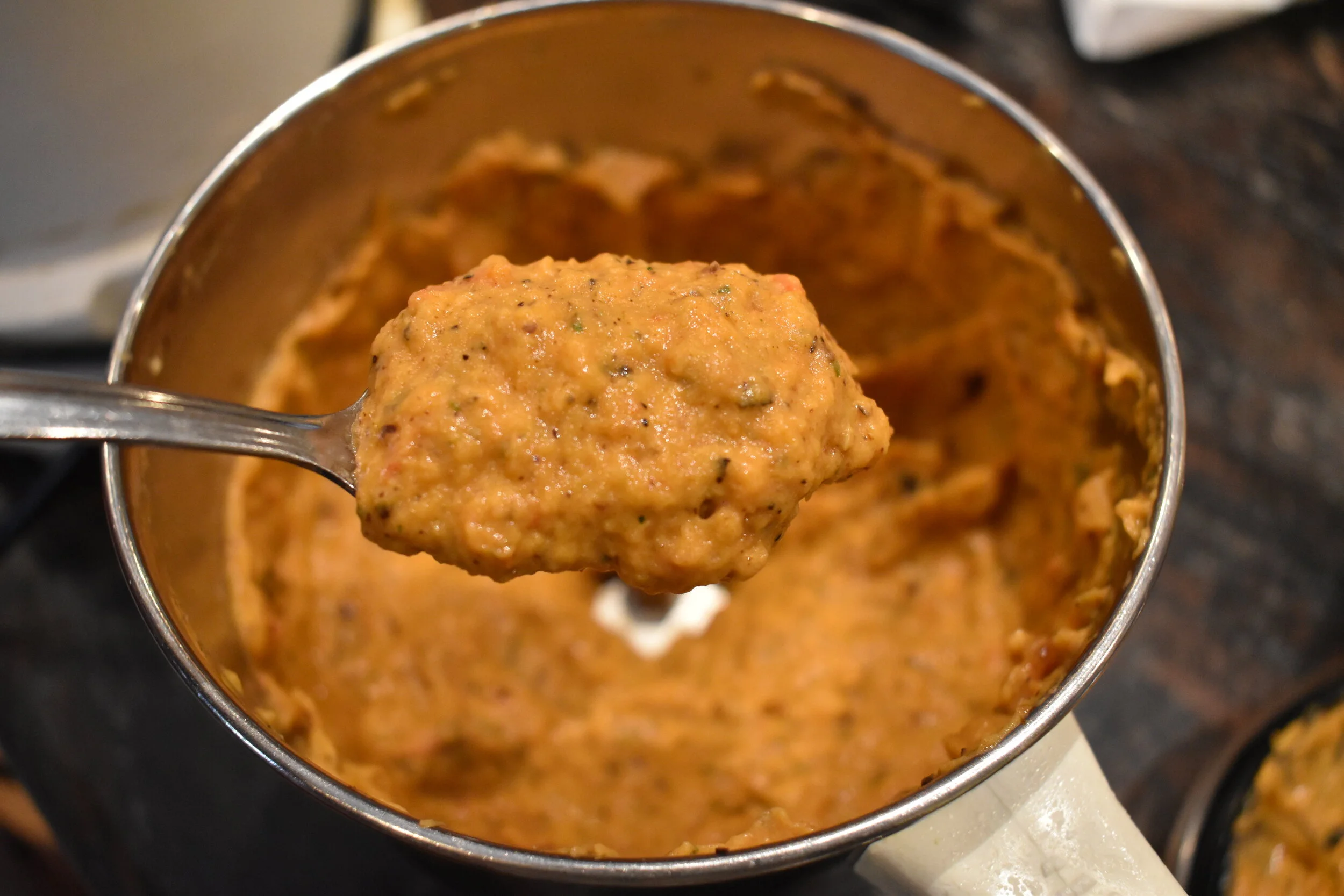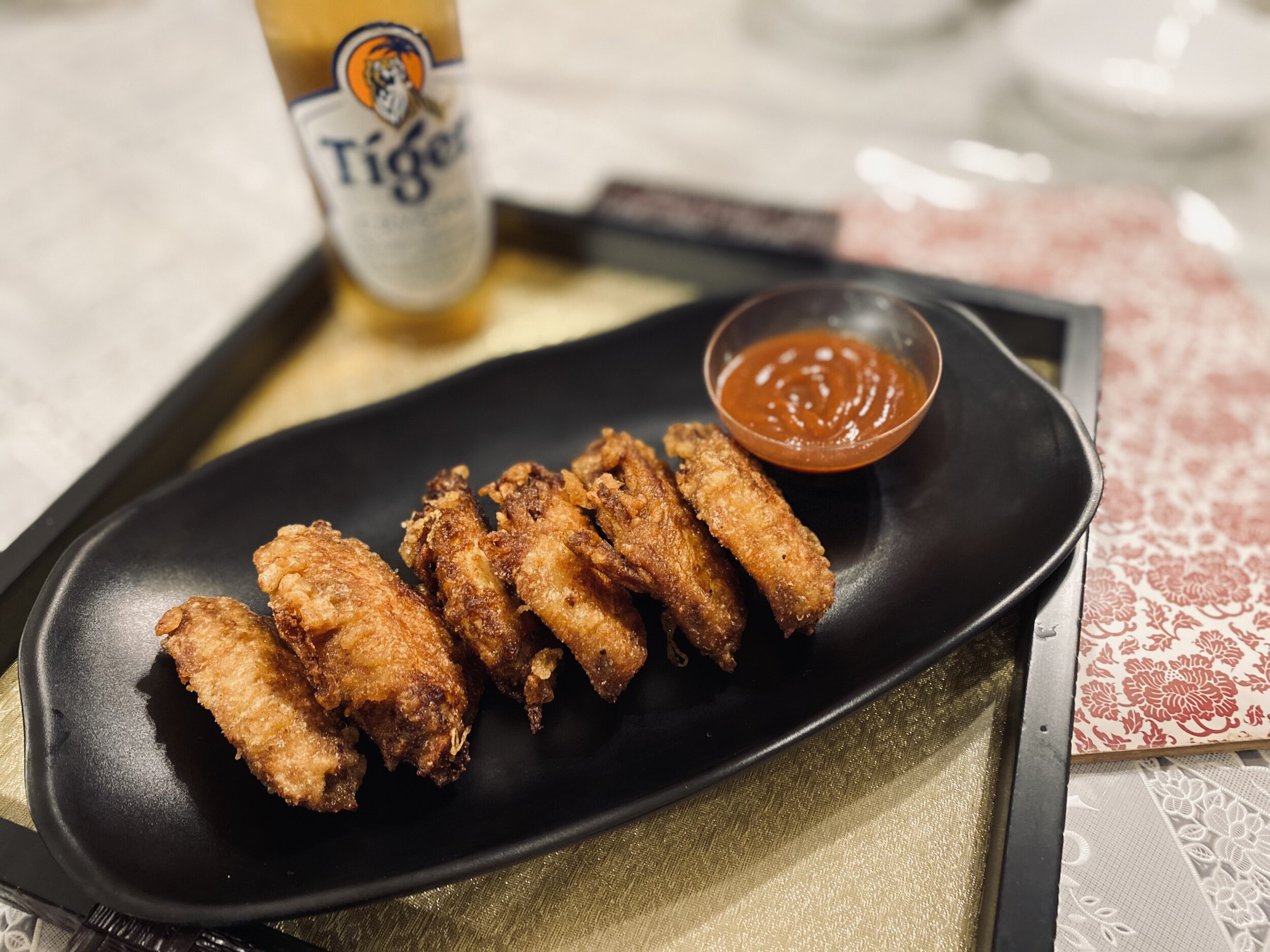The versatile Thakkali Thuvaiyal
(Sautéed Tomato Chutney)
What is a South Indian household without its repertoire of chutneys? Ours was no different. Ayah had quite the selection of chutneys and thuvaiyals / thogaiyals to accompany the breakfast staples - it was vara milagai (dried red chilli) chutney on one day, kothamalli (coriander) on another day, pudina (mint) on yet another day or this one, Aiyah’s favourite, thakkali thuvaiyal. What is the difference between a chutney and a thuvaiyal, you ask… I’m not sure what the official difference is - some say one is ground finer than the other. However, the explanation I grew up with was that when you grind the ingredients raw and then temper it, its called a chutney. A thuvaiyal is when you sauté / roast the ingredients first and then grind them.
The ammikallu in our backyard being used to grind a chutney
I remember a time when the chutneys were ground painstakingly using an ammikallu (a kind of a stone grinder consisting of a flat stone and a pestle), one that still sits in our backyard in Madras. Long gone are those days though. Ayah at some point in our early years invested in a life-saving gadget, the mixie (blender). Some say the taste of a chutney ground on an ammikallu is completely different, but for all except the extremely pedantic, the mixie serves well enough. I must say that it is one of the most used gadgets in my house, even more than the television!
Growing up, my personal favourite was the spicy vara milagai chutney. However, being married to someone who’d been born and brought up overseas with a more muted palate, thakkali thuvaiyal has become an often made menu item at home. Be it idli or dosai or vadai, which most South Indians prefer eating with sambhar and coconut chutney, the call is for this thuvaiyal. A perfect accompaniment for vadais it is, but since the apprentice believes that idli podi is the best accompaniment for anything and everything and dunking in sauce is only meant for french fries, it was with much coercing that he helped test this recipe!
While the most popular way to eat this thuvaiyal is as an accompaniment to whatever palagaram is for breakfast, it is quite versatile and can be used in different ways. My aunt would use it as a spread for sandwiches - think a South Indian version of the popular Bombay sandwich. I have also been known to spread it, with a thin layer of butter, on a slice of good old seeded sourdough toast. My 10-year-old son loves mixing it with hot rice and a drop of ghee / butter for a satisfying lunch. Sneaky mum that I am, I’ve taken to substituting part of the onions with vegetables like celery, eggplant or zucchini… In fact, when I was on a health food fad and realised that celery was a zero calorie vegetable, out went all the onions and coconut and in went the celery (the stems of the western celery, not the Chinese version which is used more for its leaves) - Ayah would have shuddered, had she known!
Note: This recipe makes enough for 4 generous serves and can be stored in the refrigerator for a few days. However, if you’d like to make less, you can halve the recipe.
Ingredients:
2 medium sized onions, sliced
2 medium sized ripe tomatoes (equal quantity as the onions), sliced
4-5 sprigs fresh coriander
2 tablespoons grated coconut
Salt to taste (about 1.5 teaspoons)
For tempering:
2 tablespoons vegetable oil
1 teaspoon black mustard seeds (rai / kadugu)
1 teaspoon split urad dal (black gram dal / ulundam paruppu)
4 dried red chillis, broken into 2 pieces each (or 2 dried red chillis and 2 fresh red chillis)
1/4 teaspoon of asafoetida (hing / perungayam), either powdered or in dry form
5-6 curry leaves
Method:
Heat the oil, add the urad dal and mustard seeds.
2 tablespoons vegetable oil
1 teaspoon black mustard seeds
1 teaspoon split urad dalWhen the mustard seeds pop and the urad dal turns light brown, add the chillies.
4 dried red chillis, broken into 2 pieces each (or 2 dried red chillis and 2 fresh red chillis)
Fry for a few seconds till the chillies are slightly brown. Then add the curry leaves and the Hing (asafoetida). Reserve some of the tempering to garnish.
1/4 teaspoon of asafoetida, either powdered or in dry form
5-6 curry leavesNext add the onions. When the onions are half cooked, just turning translucent, add the tomatoes. Fry until the tomatoes are half cooked and the skin is just starting to wrinkle. Add salt to taste.
2 medium sized onions, sliced
2 medium sized ripe tomatoes (equal quantity as the onions), sliced
Salt to taste (about 1.5 teaspoons)
5. Break up the coriander sprigs, add and stir till the coriander wilts. Add the coconut, mix it in and turn off the stove.
4-5 sprigs fresh coriander
2 tablespoons grated coconut
Note: If you don’t have fresh grated coconut, you can leave it out - the thuvaiyal will be a bit thinner in consistency but still taste good. However, if you would still like to use the coconut, re-hydrate 2 tablespoons of dessicated coconut - soak in hot water for about 10 minutes, squeeze out most of the water and then use.
6. Once cool, blend in the blender. Start slow and increase the speed of the blender after about 30 seconds. Do not add any water. The texture should be slightly coarse, not too smooth. Serve with vadai, idli or dosai.
Note:
You can increase or reduce the chillis depending on how spicy you’d like your thuvaiyal.
You can substitute all or part of the onions with mild tasting vegetables like celery (the thicker western celery, not the leafy Chinese version), eggplant or zucchini (cut into 1/2 inch cubes) to make a variety of vegetable chutneys.
Apprentice rating: Easy
Recent Posts:















